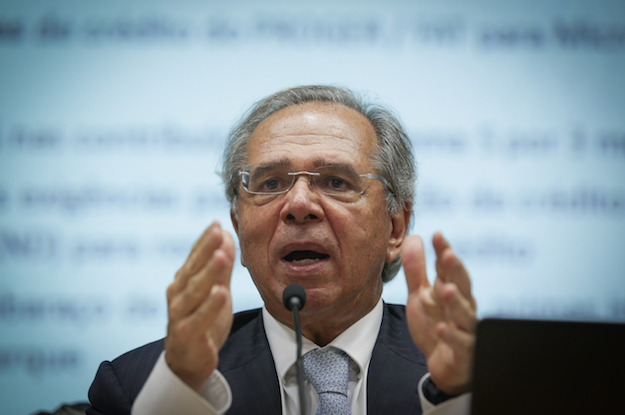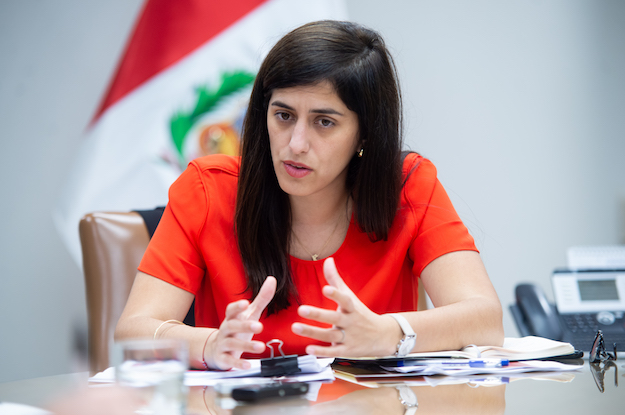This article is part of a continuing series on Latin America’s fiscal response to COVID-19.
On March 13, before Brazil had confirmed any deaths from COVID-19, Economy Minister Paulo Guedes told the country’s most popular magazine that “with 5 billion reais (around $1 billion) we will annihilate the coronavirus.”
One month and 1,000 confirmed deaths later, it’s safe to say that the number will be at least 100 times greater than Guedes’ initial projection, even as the overall damage done to South America’s largest economy as a result of the outbreak remains uncertain.
Brazil’s no-nonsense treasury secretary, Mansueto Almeida, recently said that the government’s primary deficit (excluding interest payments) for 2020 is “easily heading to 500 billion reais,” from 61 billion reais last year. Congress has already approved around 230 billion reais (3% of GDP) in emergency fiscal stimulus, according to calculations by Banco Santander. Additional measures over the next few weeks are expected to add up to something close to Almeida’s estimate.
The size of the response underlines how dramatically the terms of the debate about fiscal policy have changed in the past month or so. There is now a consensus among economists and lawmakers around the necessity to temporarily boost government spending to compensate for income losses caused by lockdowns and other containment measures. The frontier of government financing possibilities also seems to have expanded, with practices that would have scared investors just a few weeks ago now looking acceptable to national debt managers and central bankers, even in developing countries.
The debt trajectory is a case in point. Since 2015, Brazil has been fighting to contain a surge in public debt that led to a gross debt-to-GDP ratio of 76%, one of the highest among emerging market economies. Guedes himself has echoed other economists and policymakers who support austerity in saying that Brazil “has no fiscal space.”
In normal times, the first condition for a country to create that space would be to convince markets that the trajectory of the debt ratio will not lead to default or accelerating inflation. The usual recipe for achieving that involves a combination of growth, cuts in government spending and investment, and attempts to boost the government’s credibility. For the past five or so years, Brazil has worked to check all these boxes – albeit often reluctantly and at a slow pace.
Now, the coronavirus pandemic has bulldozed the conventional framework, suspending any normal notion of necessary fiscal space and how to achieve it. Brazil has been thrust backward, to the point where solvency itself needs to be assured. In this new reality, policymakers are facing the need to flatten three different curves: one for the virus, another for yields (or the cost of borrowing money to finance expenditures) and a third for the debt trajectory.
Politics and the virus
Brazil’s debt sustainability will hinge on three main issues: the final size of its emergency bill, how much of its rescue package is converted into more persistent spending, and how it will all be financed. From the perspective of financial markets, the first point may actually be the least important. Virtually every country in the world is likely to increase its debt stock by 5%-10% of GDP to try to partially make up for months of interrupted economic activity. On this score, governments have little room to maneuver; less ambitious emergency packages may lead to more permanent economic damage and even worse recovery prospects.
The issues of persistent spending and financing deserve more attention. Guedes’ reaction shows that the government was caught off guard by the crisis. This was aggravated by President Jair Bolsonaro’s aggressive opposition to partial lockdowns imposed by state governors and mayors – and recommended by his own minister of health. As a result, Congress not only has been leading the fiscal response to the crisis, but it may also be taking advantage of an emerging consensus on how to respond to the crisis to increase spending in retaliation to the president’s hostility towards governors and mayors.
This absence of a centralized policy response and coordination between different players creates two major risks. First, emergency funds may flow to groups that have not suffered significant income losses caused by the crisis, such as pensioners or civil servants. Second, lobbies and interest groups could become more powerful, and try to extract permanent tax breaks and other benefits.
With the implicit backing of the national treasury, states have incentives to act irresponsibly, conceding generous tax breaks or creating new jobs only to lobby for federal rescues when their finances blow up.
The precarious fiscal standing of some individual states poses an additional challenge. In contrast to the U.S., where the federal government hasn’t bailed out any state since the 1840s, in Brazil moral hazard is the name of the game: states take on risk, knowing the federal government will eventually bear the costs. With the implicit backing of the national treasury, states have incentives to act irresponsibly, conceding generous tax breaks or creating new jobs only to lobby for federal rescues when their finances blow up. The most recent attempt to discipline such rescues, the so-called Mansueto Plan (named after the treasury secretary), mutated in Congress into another emergency measure that could cost up to a couple hundred billion reais, with few strings attached.
There is some good news when it comes to financing. So far, the coronavirus shock has been deflationary, allowing central banks to reduce rates to record lows. Brazil’s Selic federal funds rate is now at 3.75%, and there are probably more cuts to come. However, for that to be translated into lower government borrowing costs, either markets have to believe that such a reduction will not soon be reversed due to creeping inflation, or new debt issuance has to be concentrated in short maturities. Funding costs are a key determinant of whether the country’s debt will be perceived as sustainable – a slow recovery requires low financing rates, or the debt-to-GDP ratio may spiral out of control.
In this, government intervention is expected. The treasury has been gradually reprofiling the debt, repurchasing long-dated bonds and issuing bonds linked to the overnight rate. The Central Bank is seeking authorization from Congress to accelerate this reprofiling, forcing a compression in long-term rates. It is still unclear how markets will react: Although Brazil meets virtually all of its financing needs in domestic markets, foreign investors hold 11% of outstanding local bonds and about half of the long-dated pre-fixed rate securities. A global collapse in investment returns means that Brazilian debt can still be attractive at lower yields. But if the government’s hand is too heavy in forcing yields down, the risk of a massive capital flight – and consequent currency devaluation – will increase.
At least for now, the COVID-19 shock has apparently reduced disagreements between markets and politicians regarding fiscal policy. This convergence could help Brazil flatten the three curves – keeping victims, borrowing costs and relative indebtedness as low as possible. Yet markets are unlikely to tolerate a toxic political environment, wasteful spending and other problems for too long.
—
Sobral is the Chief Economist of NEO Investimentos







